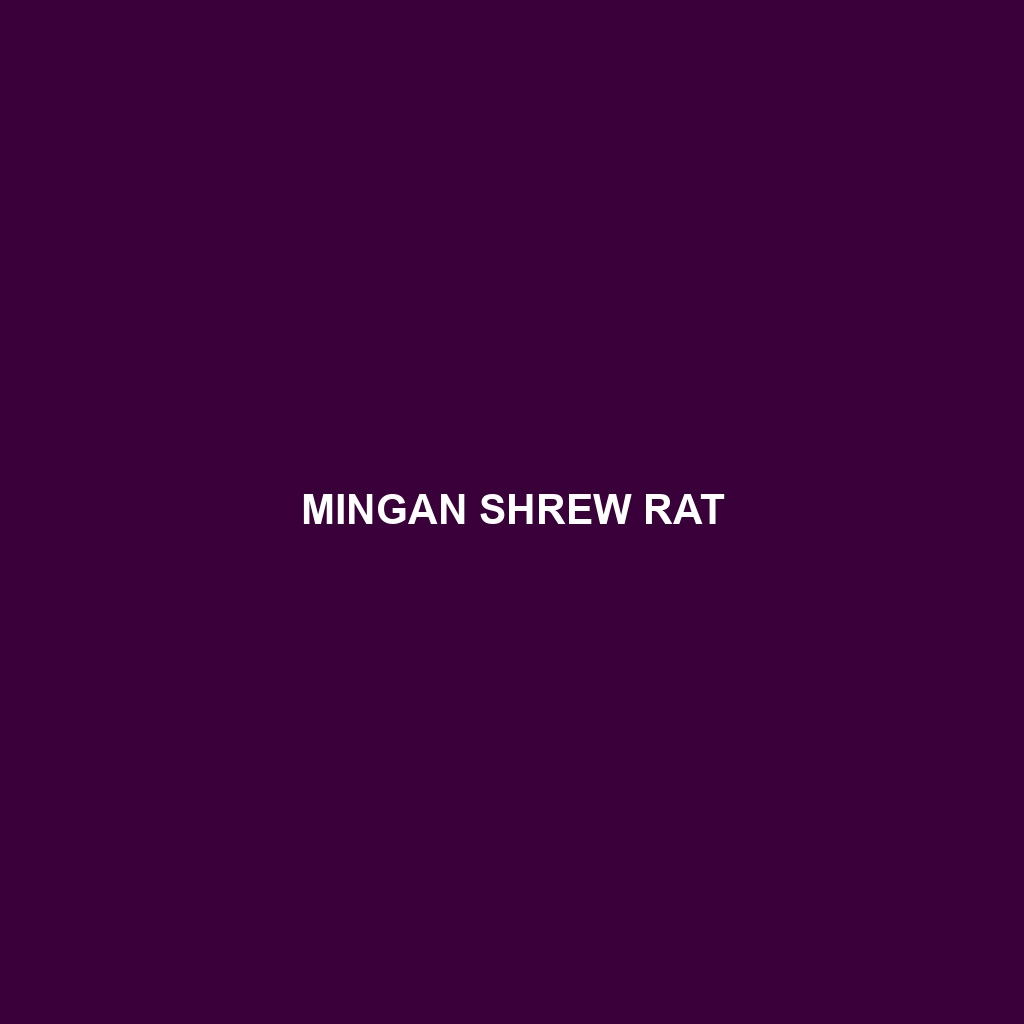Lesser Bamboo Rat Species Description
Common Name: Lesser Bamboo Rat
Scientific Name: Rhizomys sumatrensis
Habitat: The Lesser Bamboo Rat is primarily found in Southeast Asia, particularly in countries such as Thailand, Vietnam, and Myanmar. This rodent inhabits bamboo forests and grassland areas where it can burrow and seek shelter. The species prefers moist environments, often near rivers and streams, which provide the necessary humidity for their survival.
Physical Characteristics: The Lesser Bamboo Rat is a medium-sized rodent, averaging 30 to 50 cm in length, not including the tail. It is characterized by a robust body covered with coarse brown fur, which provides excellent camouflage against its natural habitat. Its fur often has a lighter underbelly, and its short, thick legs are well-adapted for digging. Distinctive features include its small eyes and large incisors, which are essential for its herbivorous diet.
Behavior: These rats are primarily nocturnal and are known for their burrowing behaviors. They create extensive tunnel systems that serve as both living spaces and storage for food. The Lesser Bamboo Rat is also social; they may live in small family groups and communicate through various vocalizations. They are known to be quite territorial and will often defend their burrow from intruders.
Diet: The diet of the Lesser Bamboo Rat mainly consists of bamboo shoots, roots, and other plant material. They are herbivorous and play a vital role in their environment by helping to manage bamboo growth. During feeding, they utilize their strong teeth to gnaw through tough vegetation, which is essential for their survival in their bamboo-rich habitat.
Reproduction: Lesser Bamboo Rats have a gestation period of about 30 to 40 days, typically yielding 2 to 3 offspring per litter. Breeding occurs throughout the year, but peaks in the wet season when food resources are abundant. Upon reaching maturity, young rats will leave the maternal burrow to establish their own territory, promoting genetic diversity.
Conservation Status: The Lesser Bamboo Rat is currently listed as “Least Concern” by the IUCN, although habitat destruction and hunting pose potential threats to local populations. Conservation efforts in their native habitats are crucial to ensuring their survival and maintaining ecological balance.
Interesting Facts: One fascinating fact about the Lesser Bamboo Rat is its ability to dig quickly and create extensive underground burrows, which can reach depths of up to 1 meter. Additionally, they can remain underwater for several minutes, offering them an advantage against predators.
Role in Ecosystem: As a herbivore, the Lesser Bamboo Rat plays a significant role in the ecosystem by influencing the growth patterns of bamboo forests. Their foraging habits contribute to seed dispersal and soil aeration, which benefits other plant species and maintains the health of their habitat. Furthermore, they serve as prey for a variety of predators, making them an integral part of the food web in Southeast Asian ecosystems.
